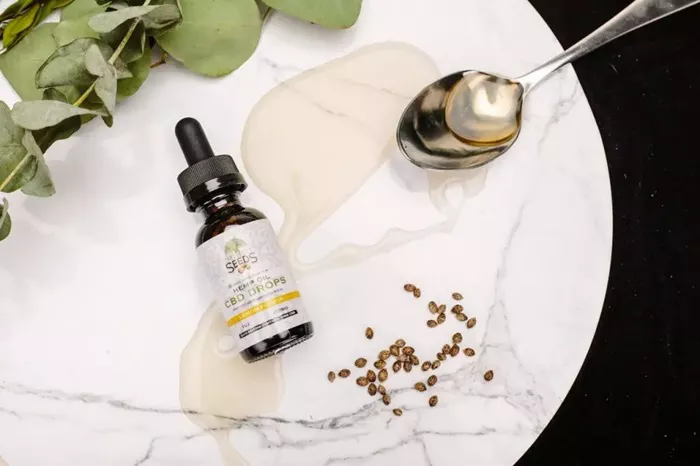Linoleic acid is increasingly popular in the skincare industry, noted for its unique properties and skin benefits. Often included in products for hydration, acne control, and skin barrier repair, linoleic acid plays a crucial role in skin health. This article delves into what linoleic acid is, how it benefits the skin, and how it can be incorporated into your skincare routine.
Linoleic Acid
Linoleic acid is an essential fatty acid that belongs to the omega-6 family. Because the body cannot produce it, we must obtain linoleic acid through diet or topical application. This fatty acid is a component of our skin’s natural lipid layer, contributing to moisture retention and skin barrier function. Linoleic acid can be found in various oils and foods, such as sunflower oil, safflower oil, and certain nuts and seeds.
Why Is Linoleic Acid Important for Skin?
Linoleic acid’s role in maintaining healthy skin is essential. It has a lightweight texture and easily absorbs into the skin, making it ideal for individuals with oily or acne-prone skin. One of its primary functions is to maintain the skin’s protective barrier, helping to seal in moisture and ward off external aggressors like pollution and bacteria.
Moreover, studies have shown that people with acne-prone skin tend to have lower levels of linoleic acid in their skin surface lipids. This deficit can lead to clogged pores and inflammation, exacerbating acne symptoms. Including linoleic acid in skincare can rebalance these levels, helping to reduce breakouts and skin irritation.
The Benefits of Linoleic Acid in Skin Care
Linoleic acid is valued for its many skin benefits. Below are the key advantages that make it a favored ingredient in skincare formulations.
1. Strengthens the Skin Barrier
Linoleic acid strengthens the skin’s barrier function, which is essential for maintaining hydrated, healthy skin. The skin barrier acts as a shield against environmental stressors, pathogens, and pollutants. When the skin barrier is compromised, it loses water more easily, resulting in dryness, irritation, and sensitivity. By replenishing this essential fatty acid, linoleic acid helps maintain a robust skin barrier.
2. Balances Sebum Production
Unlike many oils that may feel heavy or clogging on the skin, linoleic acid is light and fast-absorbing. It has been shown to reduce the density of sebum, making it beneficial for those with oily or acne-prone skin. Instead of blocking pores, it regulates natural oil production, making skin look healthier and less greasy.
3. Anti-Inflammatory and Soothing Properties
Linoleic acid exhibits anti-inflammatory properties, making it ideal for irritated or sensitive skin. It can soothe redness, reduce swelling, and calm conditions like eczema and dermatitis. Its anti-inflammatory action can also benefit acne-prone individuals, helping to reduce the redness and swelling associated with breakouts.
4. Improves Skin Texture and Tone
Linoleic acid contributes to smoother and more even skin texture. By keeping the skin barrier intact and maintaining hydration levels, it minimizes the appearance of fine lines and provides a plump, youthful look. Regular use of linoleic acid can also fade hyperpigmentation over time, resulting in a more uniform skin tone.
5. A Natural Antioxidant
Linoleic acid possesses antioxidant properties, which help protect the skin from oxidative stress and environmental damage. Antioxidants neutralize free radicals—unstable molecules that can cause cellular damage. By defending the skin from free radicals, linoleic acid helps slow down the visible signs of aging.
How to Use Linoleic Acid in Your Skincare Routine
Incorporating linoleic acid into your skincare routine can be simple, especially since it is found in many products, from serums to moisturizers and oils. Here’s a breakdown of how to introduce linoleic acid into different steps of your skincare regimen.
1. Cleansers with Linoleic Acid
Linoleic acid can be found in certain gentle, oil-based cleansers. These cleansers help remove makeup and impurities without stripping the skin of its natural oils. Oil-based cleansers containing linoleic acid can help balance sebum production and prevent the skin from overproducing oil.
2. Serums and Spot Treatments
Serums formulated with linoleic acid deliver this beneficial ingredient directly into the skin. These serums are ideal for addressing specific concerns like acne, inflammation, or dehydration. Applying a linoleic acid serum after cleansing can provide a concentrated dose of this fatty acid, enhancing skin texture and clarity over time.
3. Moisturizers and Creams
Moisturizers with linoleic acid work to lock in hydration, making them suitable for both daytime and nighttime use. For people with dry skin, using a moisturizer rich in linoleic acid can help rebuild the skin barrier and reduce sensitivity.
4. Face Oils Containing Linoleic Acid
Natural oils high in linoleic acid, like safflower, grape seed, or evening primrose oil, are wonderful options for those seeking to add this fatty acid to their skincare routine. Face oils can be applied as the last step in a nighttime routine to provide additional moisture and repair benefits.
Who Should Use Linoleic Acid?
Linoleic acid can be beneficial for nearly every skin type, though it may be particularly advantageous for certain skin conditions. Below are some specific groups who may benefit most from linoleic acid-based products.
1. Acne-Prone Skin
Those with acne-prone skin may find linoleic acid especially useful. As mentioned, low levels of linoleic acid can lead to an imbalance in skin oil, which may contribute to acne formation. By restoring this essential fatty acid, linoleic acid helps unclog pores and reduce inflammation, making it an excellent choice for individuals struggling with breakouts.
2. Sensitive and Inflammatory Skin
Linoleic acid’s anti-inflammatory properties make it ideal for people with sensitive skin or inflammatory conditions, such as eczema and rosacea. Its ability to calm and soothe the skin can provide relief from irritation, redness, and discomfort, improving the overall condition of sensitive skin.
3. Aging Skin
As a potent antioxidant and hydrating ingredient, linoleic acid can slow down the visible signs of aging. Regular use can help maintain skin elasticity and firmness, reduce fine lines, and fade dark spots or pigmentation associated with aging.
Common Sources of Linoleic Acid in Skin Care Products
Linoleic acid can be derived from many natural sources, which are often highlighted in ingredient lists of skincare products. Here are some common sources of linoleic acid:
1. Safflower Oil
Safflower oil is high in linoleic acid and is known for its lightweight texture. It is suitable for acne-prone skin and helps regulate sebum production while providing moisture.
2. Sunflower Oil
Sunflower oil is rich in linoleic acid and Vitamin E, making it both nourishing and protective. Its lightweight consistency makes it ideal for sensitive and oily skin types.
3. Grape Seed Oil
Grape seed oil is a versatile option containing high levels of linoleic acid. It is known for its ability to absorb quickly into the skin without leaving a greasy residue, making it great for all skin types.
4. Evening Primrose Oil
Evening primrose oil is often used in skincare for its soothing and hydrating properties. It is rich in linoleic acid and is often recommended for dry, mature, or sensitive skin.
Potential Side Effects and Precautions
While linoleic acid is generally safe for all skin types, there are a few considerations to keep in mind.
1. Allergic Reactions
Though rare, some people may experience an allergic reaction to certain oils that contain linoleic acid. If you have sensitive skin, perform a patch test to check for any adverse reactions.
2. Excessive Oiliness for Certain Skin Types
Although linoleic acid is beneficial for oily skin, some individuals may find that using linoleic-rich oils in high amounts can make their skin appear greasy. It is essential to use products with the appropriate formulation and concentration for your skin type.
Conclusion
Linoleic acid is a versatile and valuable ingredient in skincare, offering numerous benefits, from strengthening the skin barrier to reducing inflammation. Its role in sebum regulation and its soothing properties make it suitable for various skin types, particularly oily, acne-prone, and sensitive skin. By incorporating linoleic acid into your routine through cleansers, serums, or face oils, you can promote a healthier, more resilient complexion. Whether your goal is to address specific concerns or simply maintain balanced, radiant skin, linoleic acid can be a beneficial addition to any skincare regimen.
Related Topics

































